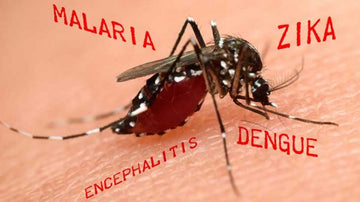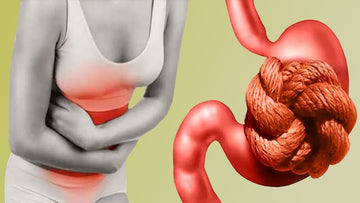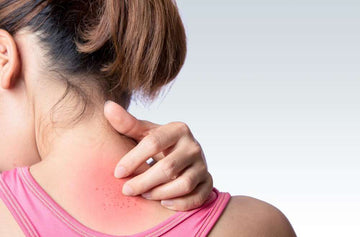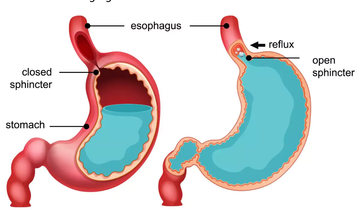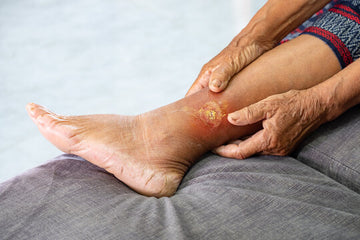
Definition:
Gangrene is a dead of body tissue due to a lack of blood flow or a serious bacterial infection. It commonly affects the arm and legs, including the toes and fingers. It can also occur in the muscles and in organs inside the body, such as the gallbladder.
Types of gangrene:
There are several different types of gangrene, But the most common types are:
Dry gangrene – Where blood flow to an area of the body becomes blocked. Skin looks brown to purplish blue or black. Dry gangrene may develop slowly. It occur most commonly people who have diabetes or blood vessel disease such as atherosclerosis.
Wet gangrene – It spreads rapidly throughout the body and caused by a combination of an injury and bacterial infection. It can lead to serious complications if not treated immediately. Bacteria and pus can spread quickely to other tissues and organs. Due to pus and dead cell foul smell you may need to have a body part removed to save your life.
Gas gangrene – Where an infection develops deep inside the body and the bacteria responsible begin releasing gas. It is the most serious type of gangrene. The infection spread very quickly. Gas gangrene produce a very bad smell and brownish pus develops.
Gangrene causes?
- Poor blood circulation
- Obesity
- Smoking
- Diabetes
- Peripheral arterial disease
- Weak immunity
- Injury
Symptoms of the gangrene:
When gangrene affects the skin signs and symptoms may include:
- Changes in skin color
- Swelling
- Blisters
- Sudden or severe pain in the affected area, numbness
- A foul smelling discharge from wound
- Thin, shiny or skin without hair
- Skin feels cool or cold to the touch
- Painful or swollen tissues
When bacterial infection spreads throughout the body
- Low blood pressure
- Increased heart beat
- Shortness of breath
- Fever or temperature may lower down than 96.8%
Complication with gas gangrene
- Necrosis
- Amputation
- Septicemia
- Delirium
WHO’S AT RISK FOR DEVELOPING GANGRENE
- Arteriosclerosis
- Raynaud’s disease
- Diabetes
- Blood clots
- Appendicitis
- Hernia
- Smoking
- Bitten by an animal
- HIV/AIDS
- Head injury
- Alcohol addiction
- Smoking, drinking alcohol and using intravenous drugs may impair your circulation and add to risk of developing gangrene
Ayurvedic treatment for gangrene:
Ayurvedic treatment for gangrene aims to balance doshas(energies) in the body and to manage the problem of gangrene there are various herbs present in Ayurveda, which help to provide relief in the symptoms, and increase the body’s ability to fight against infections and support the good immunity
Panchakarma Therapies:
Panchakarma, a set of the detoxification therapies in Ayurveda, may be recommended to remove toxins from the body and restore balance. The Therapies such as a Virechana (Purgation) and Raktamokshna (Leech therapy) may be beneficial for individuals with gangrene
Virechana – Purgation
Raktamokshana – Leeching
Herbal remedies for gangrene:
Marshmallow roots
- Marshmallow roots can effectively be used in gangrene treatment.
- Their anti-inflammatory properties are found beneficial in soothing the gangrene symptoms.
- So prepare a tea by adding one teaspoon powder of marshmallow roots
Olive leaf
- Olive leaves have antioxidants and antimicrobial properties.
- It help repair your damaged skin cells as well as tissues
- So take around 250 ml of olive leaf extracts to overcome the gangrene symptoms
Cabbage
- It has anti-inflammatory in nature and it also contains vitamins C and K.
- Therefore, application of cabbage to the affected areas reduces the inflammation along with restoring your original skin color.
- Make a smooth paste and apply on affected area and cover it with a clean cloth.
Haridra (Curcuma longa)
- The curcumin found in turmeric can help wounds heal by decreasing inflammation and oxidation.
Amla (Emblicsa officinalis)
Amla contain vitamin C and anti- inflammatory, antioxidant, anti-arthogenic, hypotensive, anti-mutagenic properties. It Improve our immunity and repair damage skin cells.
DIET AND BEHAVIOUR FOR GANGRENE
- Avoid food items which produce dosha imbalance like cold, sour and dry food, hard to digest. Because doshas imbalance aggravates the symptoms
- Intake of proper amounts of fluids
- Towels are not shared with others
Yoga for gangrene:
Anulom Vilom Pranayama
Bhastrika Pranayama

